Trace your Family Tree 16.5 Million years ago?
What a surprise that something so small can last so long!
Raining kettles and dishwashers here so to my files I flee. Ever heard of an Estrildidae Finch?
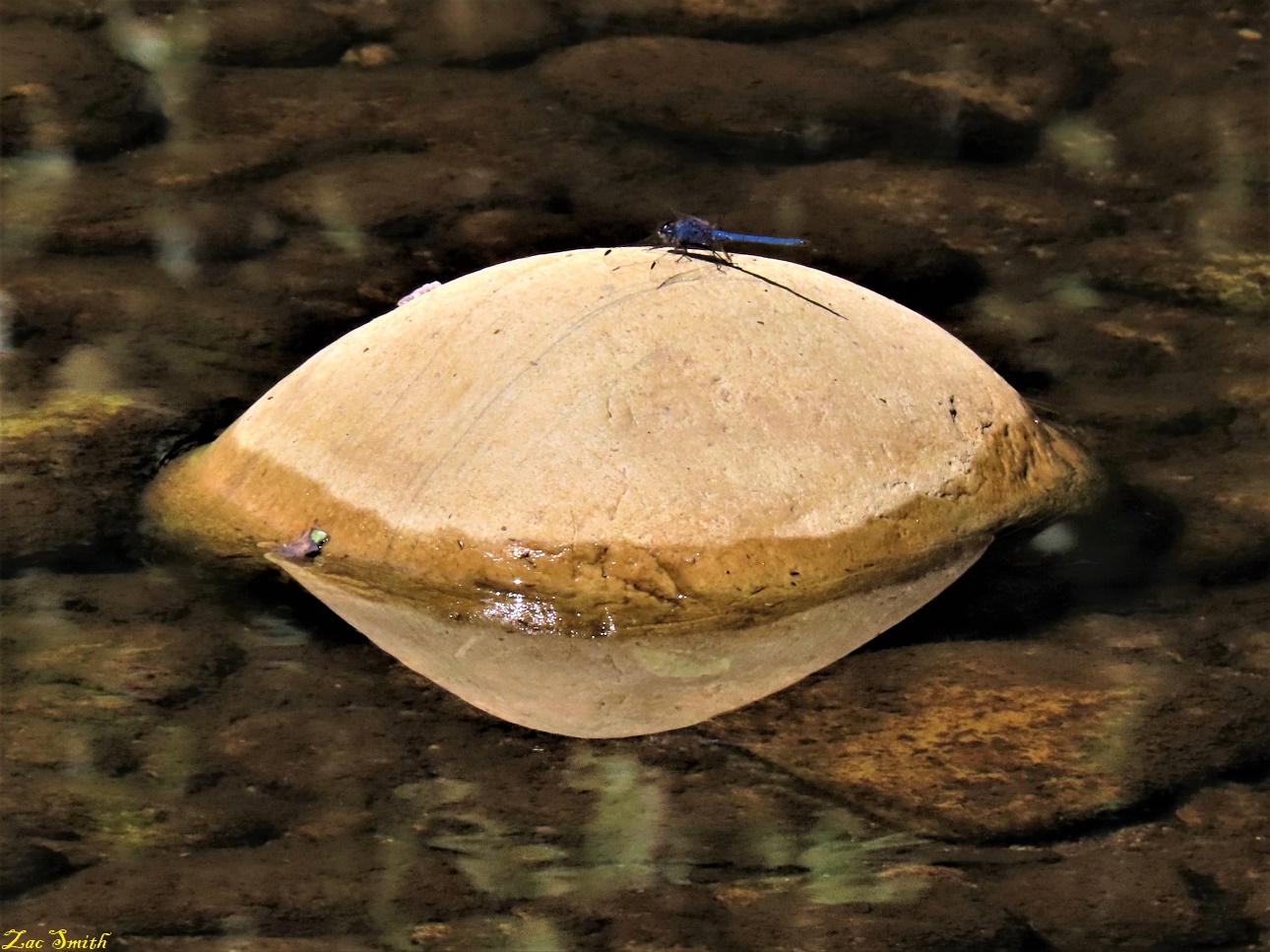
At one of our favorite places here a while before the lockdown. The River of course!
The trick is that if you want to become indoctrinated by mother nature, then simply find a stretch of fresh and pure mountain water to sit by and relax for a while. No shouting, or swimming, or any electronic devices, but just you and yourself, preferably not in the open. Sit and wait and listen. See what happened here as nature opened her story book!
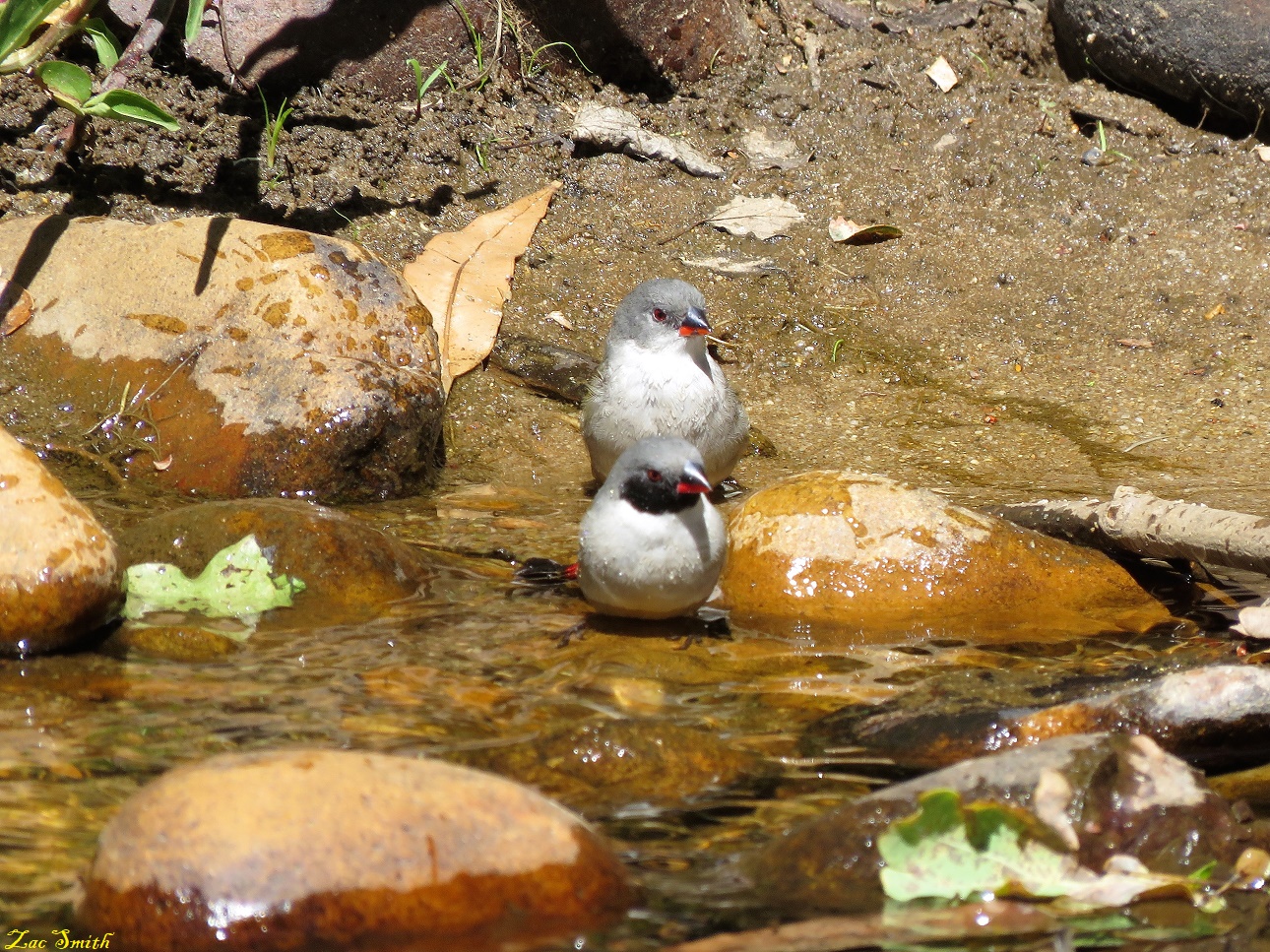
Okay, I will talk in a whisper here and see what just popped down by the riverside!
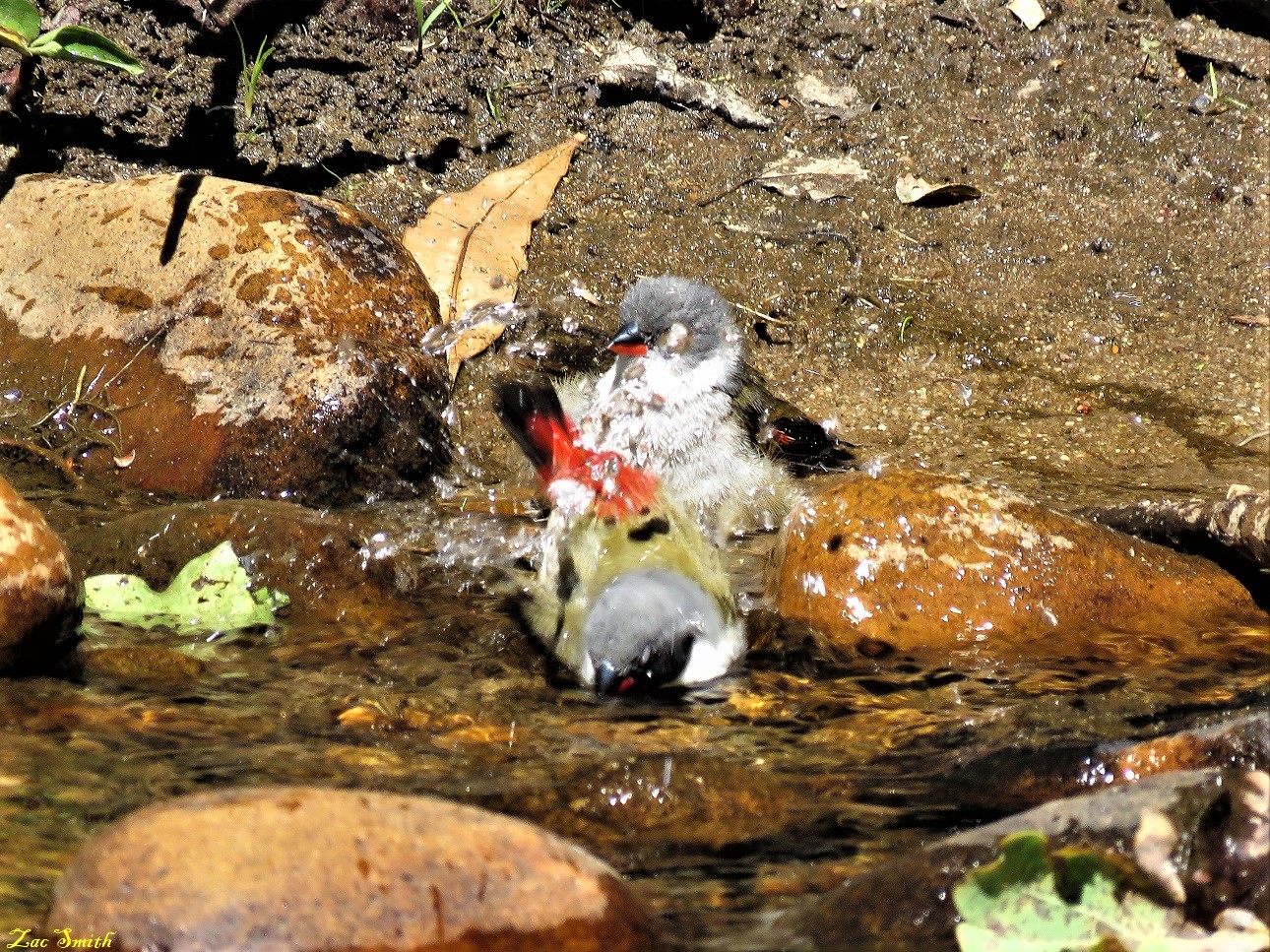
A pair of "Swee Waxbills" landed to take a bath!
So, I decided to do a wee bit of research on these little wonders and was amazed at what I found. Have a look here!
"The swee waxbill (Coccopygia melanotis), is a common species of estrildid finch native to Southern Africa". Estrildidae, or estrildid finches, is a family of small passerine birds of the Old World tropics and Australasia".
"They comprise species commonly known as munias, mannikins, firefinches, parrotfinches and waxbills. Sometimes they are treated as a subfamily, Estrildinae, within the family Passeridae; Passeridae narrowly defined comprises the Old World sparrows".
"Despite the word "finch" being included in the common names of many of the species, they are not closely related to birds with this name in other families, such as the Fringillidae, Emberizidae or Passerellidae".
"They are gregarious and often colonial seed eaters with short, thick, but pointed bills. They are all similar in structure and habits, but vary widely in plumage colours and patterns".
[Source](https://en.wikipedia.org/wiki/Estrildidae)
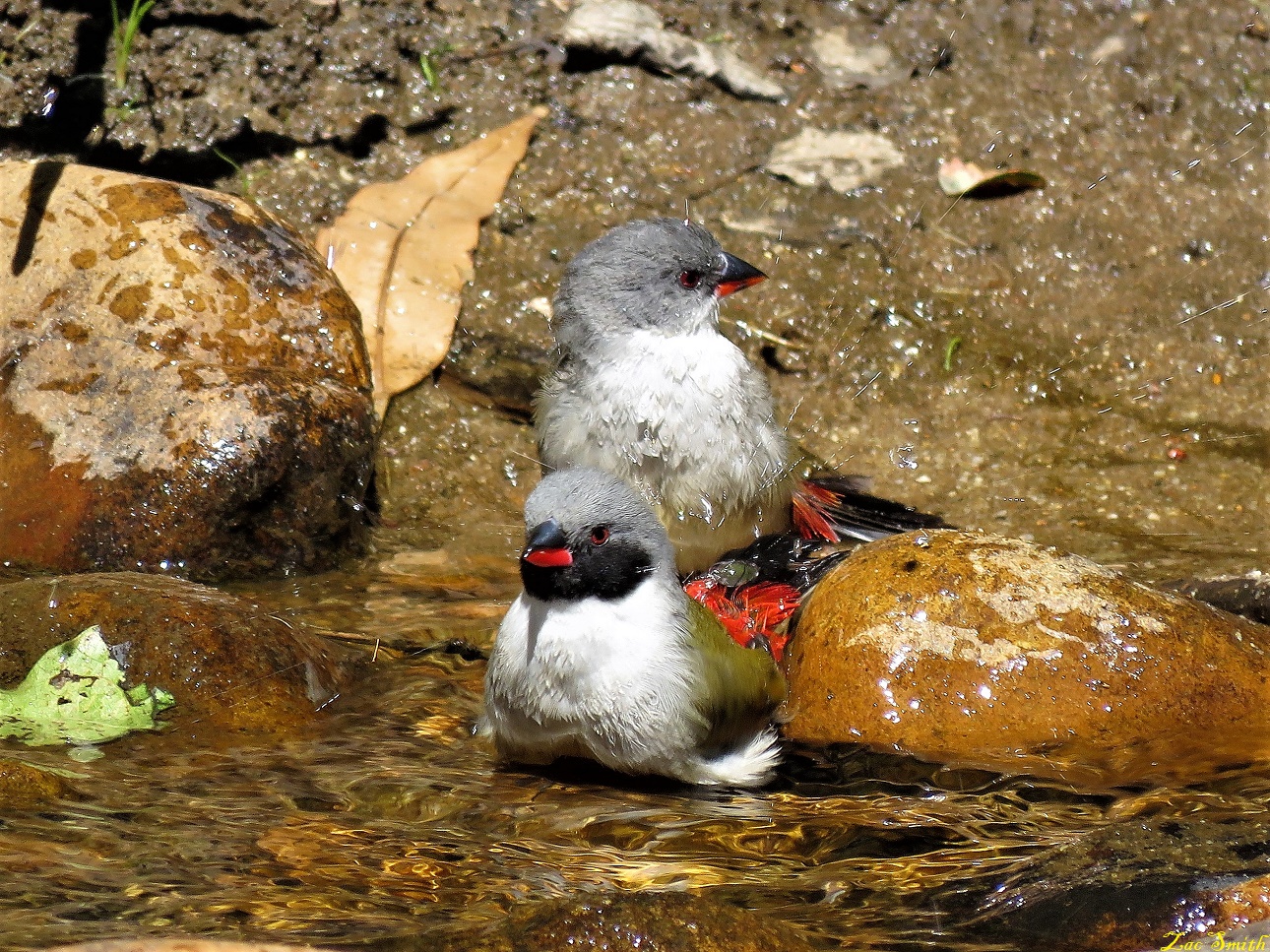
Amazing that these little ones existed way before mankind came along!
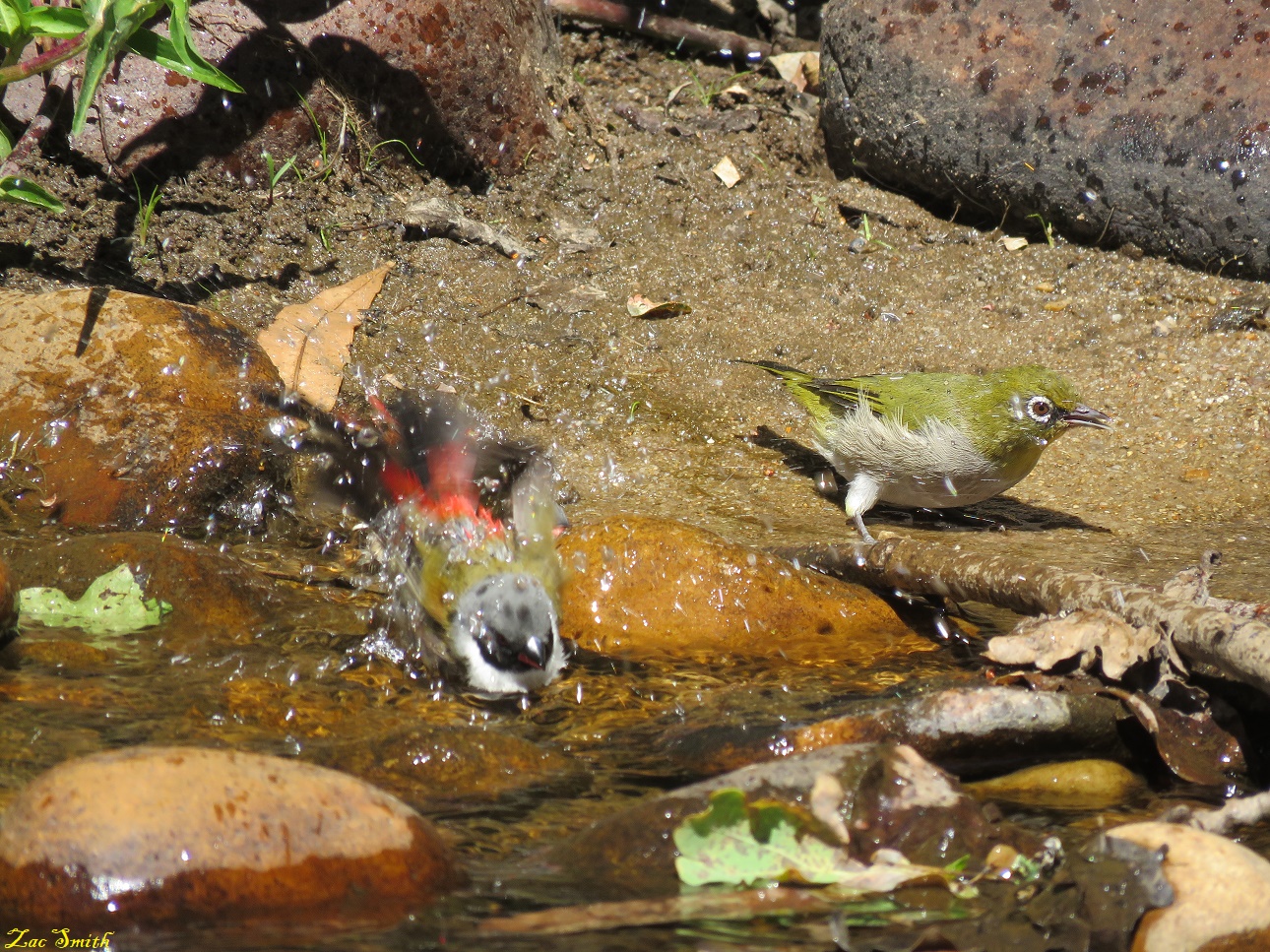
"Origin of estrildid species" "The phylogeography and possible origin of estrildid species have been studied. The following scheme may be useful to represent a hypothetical origin in India in the last and strongest Himalayas uplift (16.5 million years ago), when the monsoon rains regime was established in India".
[Source](https://en.wikipedia.org/wiki/Estrildidae)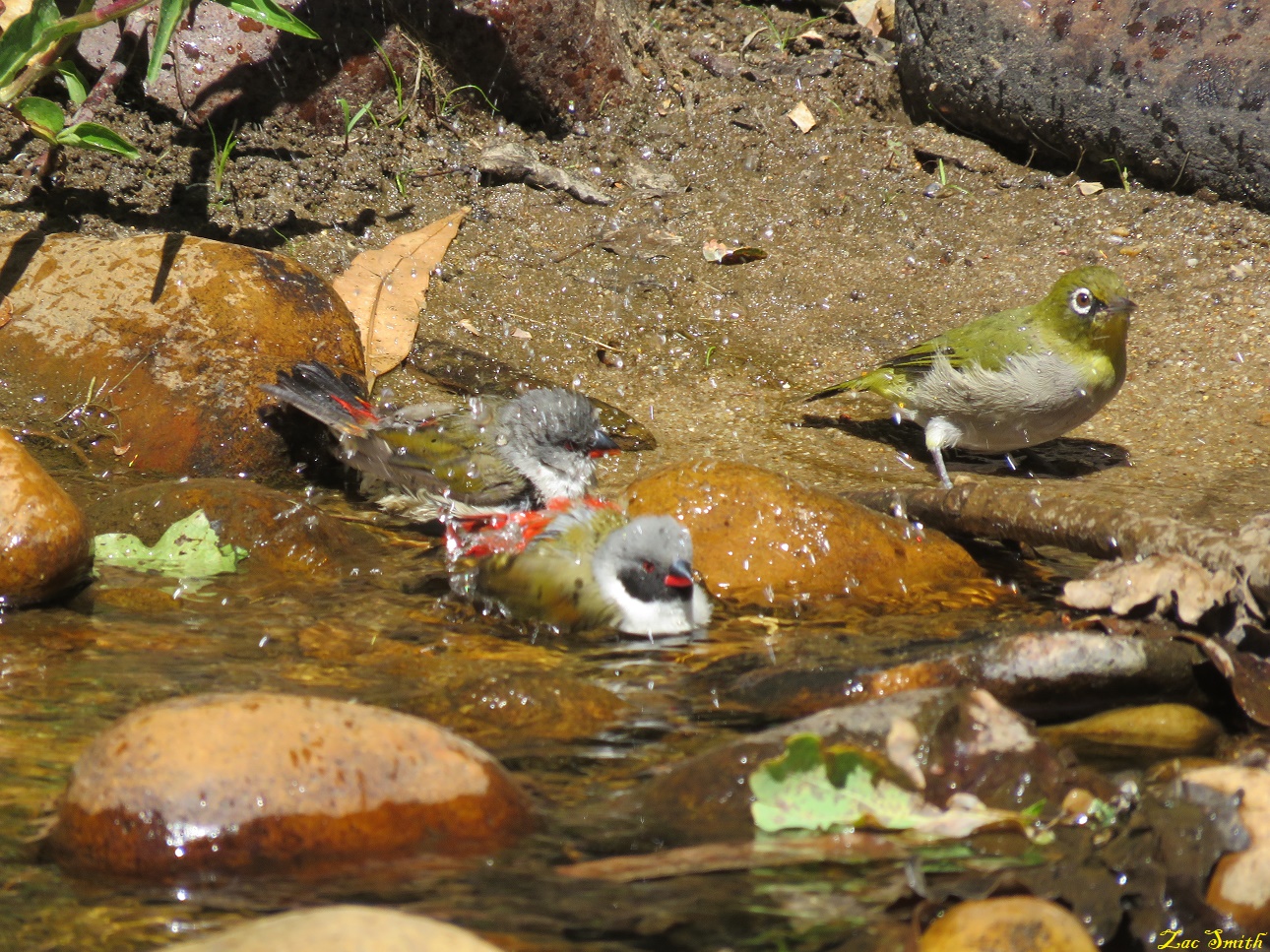
Not the first time that I see a little Cape White Eye hanging out with the Swee's. Maybe for safety sake?
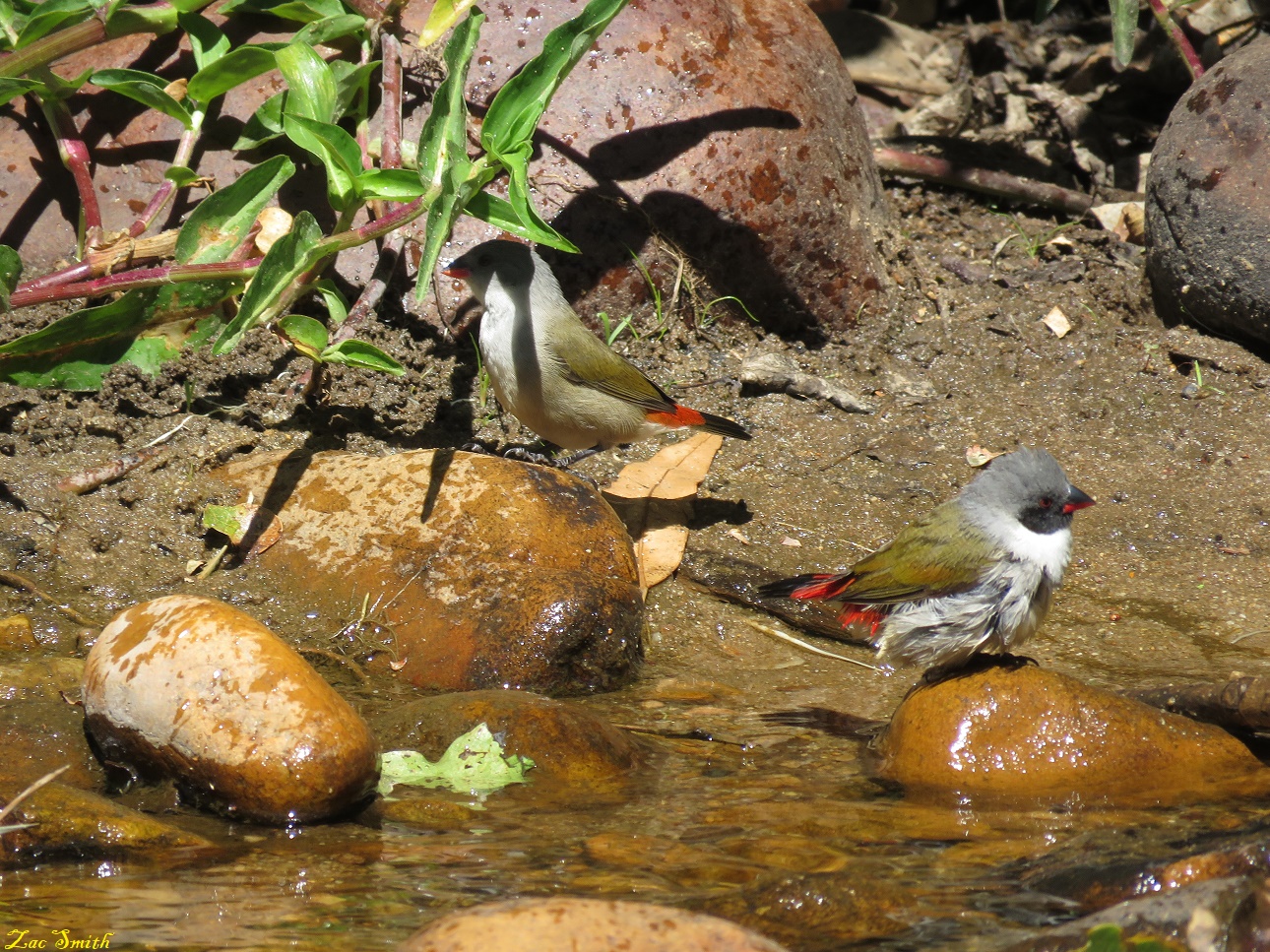
Time to dry out on a rock and they had no idea that I was there watching them.
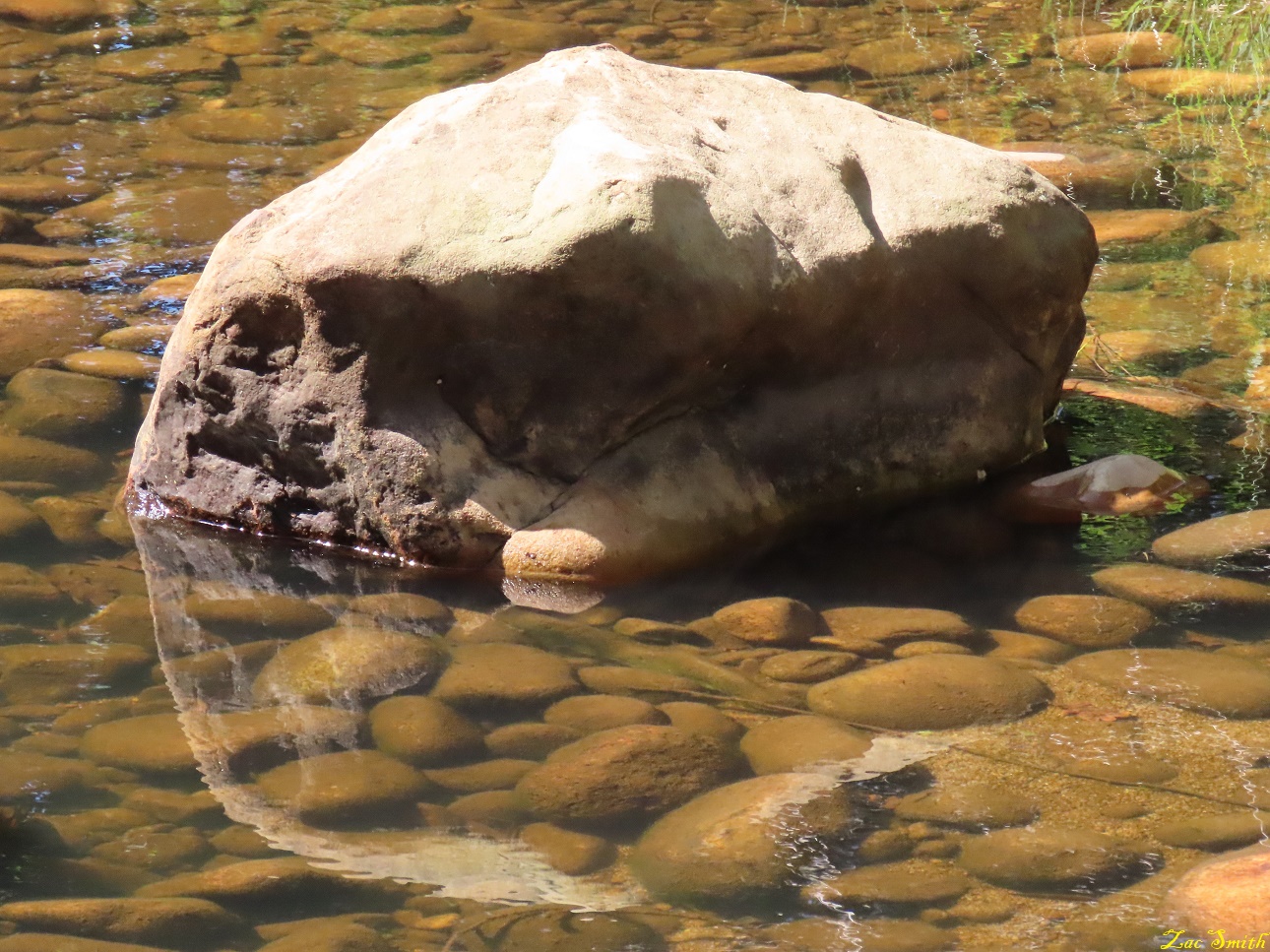
Just a nice reflection in the water for you here!
.JPG)
Raw and powerful nature that can reflect such tender tiny little critters in her care.
One day I will get up there, perhaps in a helicopter to see where the river in that valley originates. Maybe there's a secret mountain spring up there in those huge cliffs!
Note: All photos are my own, unedited and cropped for uploading.
Sections in abbreviated commas ("") have been duly cited.
Camera used: Canon Powershot SX60HS
For now, I think that there is enough reading here and we hope that you have enjoyed the story.
Thank you for visiting a post by @papilloncharity!

Don’t have a Hive account yet? Sign up free here!
Those birds are so pretty and how fun that you got to see them up close taking their bath! Very interesting information that you found out about them. Anytime I can be by a stream or a river or the ocean and observe nature is wonderful.
Thank you and we also love to sit at the waters anywhere.
Always good places to see the birds!
#posh share: Source
Nice shot with nice weather, really I am fascinated friend.
Glad that you liked the post, thank you!
Blessings!
looks like you was not sitting there completely without any electronic gadgets :))
(but I totally got the idea, and support you in that).
Hahaha, only electronic gadget was my camera on click silent Lol.